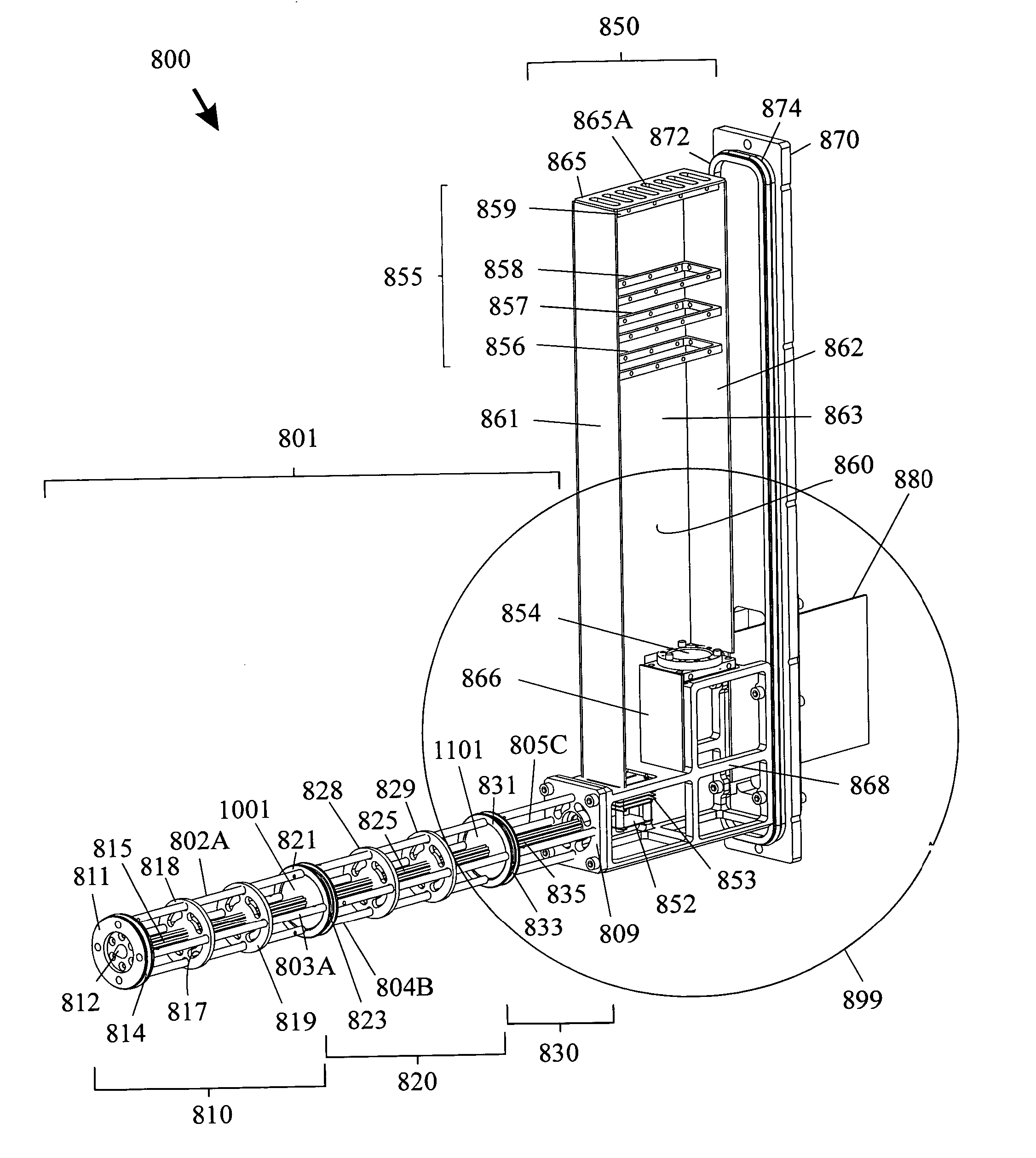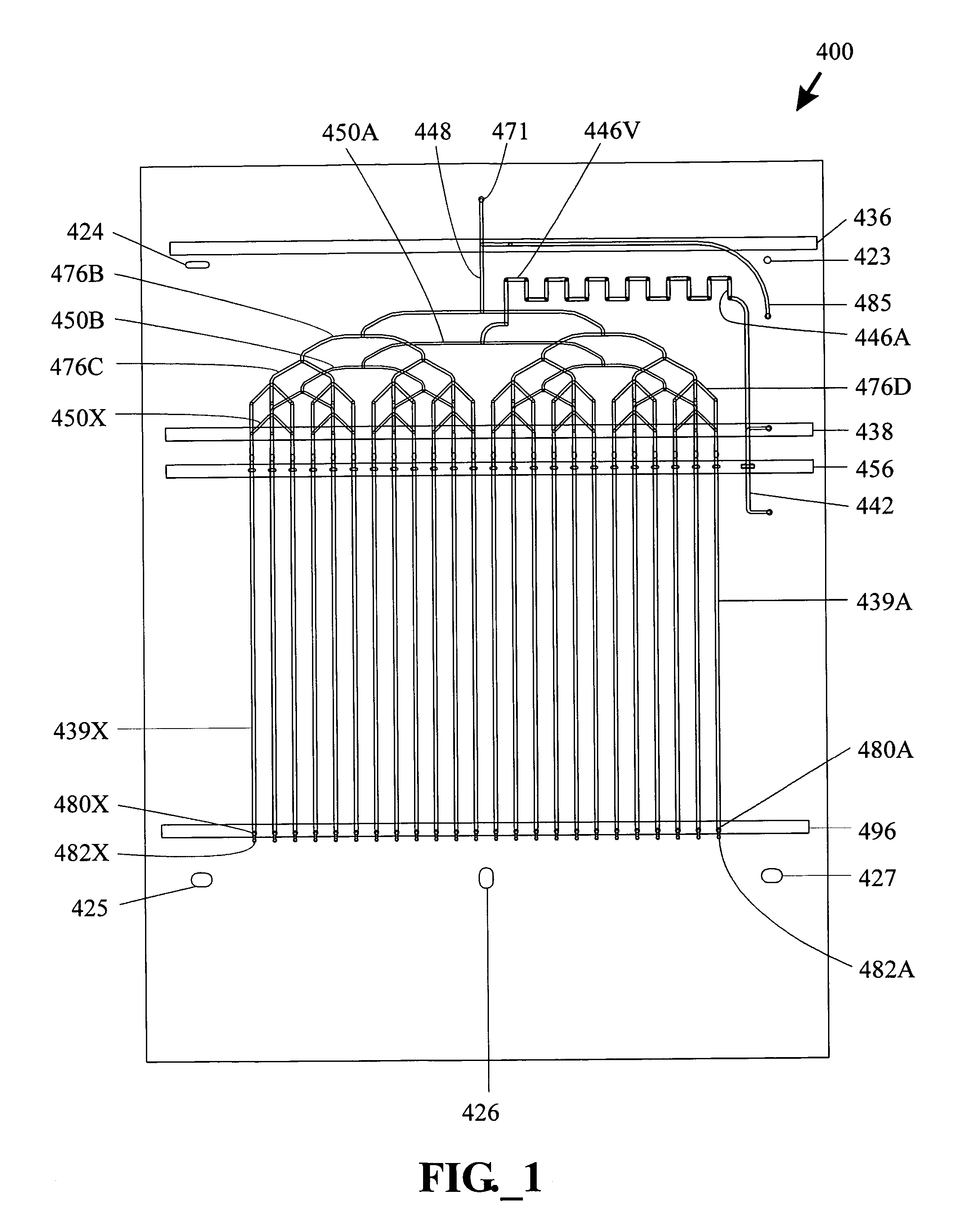High throughput systems and methods for parallel sample analysis
a high throughput, sample technology, applied in the direction of particle separator tube details, dispersed particle separation, separation process, etc., can solve the problems of inability to identify or characterize individual components, inability to integrate fluid phase separation/ms systems, and successive instability of increasing mass-to-charge ratios
- Summary
- Abstract
- Description
- Claims
- Application Information
AI Technical Summary
Problems solved by technology
Method used
Image
Examples
Embodiment Construction
[0076] The disclosures of the following patents / applications are hereby incorporated by reference as if set forth herein: U.S. Pat. No. 6,923,907 entitled “Separation Column Devices and Fabrication Methods,” and U.S. patent application Ser. No. 10 / 638,258 entitled “Multi-Column Separation Devices and Methods” filed Aug. 7, 2003.
DEFINITIONS
[0077] The terms “column” or “separation column” as used herein are used interchangeably and refer to a region of a fluidic device that contains stationary phase material and is adapted to perform a chromatographic separation process.
[0078] The term “fluid phase separation process region” refers to any region adapted to perform a fluid (i.e., liquid or gas) phase chemical or biochemical analytical process such as chromatographic, electrophoretic, electrochromatographic, immunoaffinity, gel filtration, and / or density gradient separation.
[0079] The term “interpenetrably bound” as used herein refers to the condition of two adjacent polymer surface...
PUM
 Login to View More
Login to View More Abstract
Description
Claims
Application Information
 Login to View More
Login to View More - R&D
- Intellectual Property
- Life Sciences
- Materials
- Tech Scout
- Unparalleled Data Quality
- Higher Quality Content
- 60% Fewer Hallucinations
Browse by: Latest US Patents, China's latest patents, Technical Efficacy Thesaurus, Application Domain, Technology Topic, Popular Technical Reports.
© 2025 PatSnap. All rights reserved.Legal|Privacy policy|Modern Slavery Act Transparency Statement|Sitemap|About US| Contact US: help@patsnap.com



